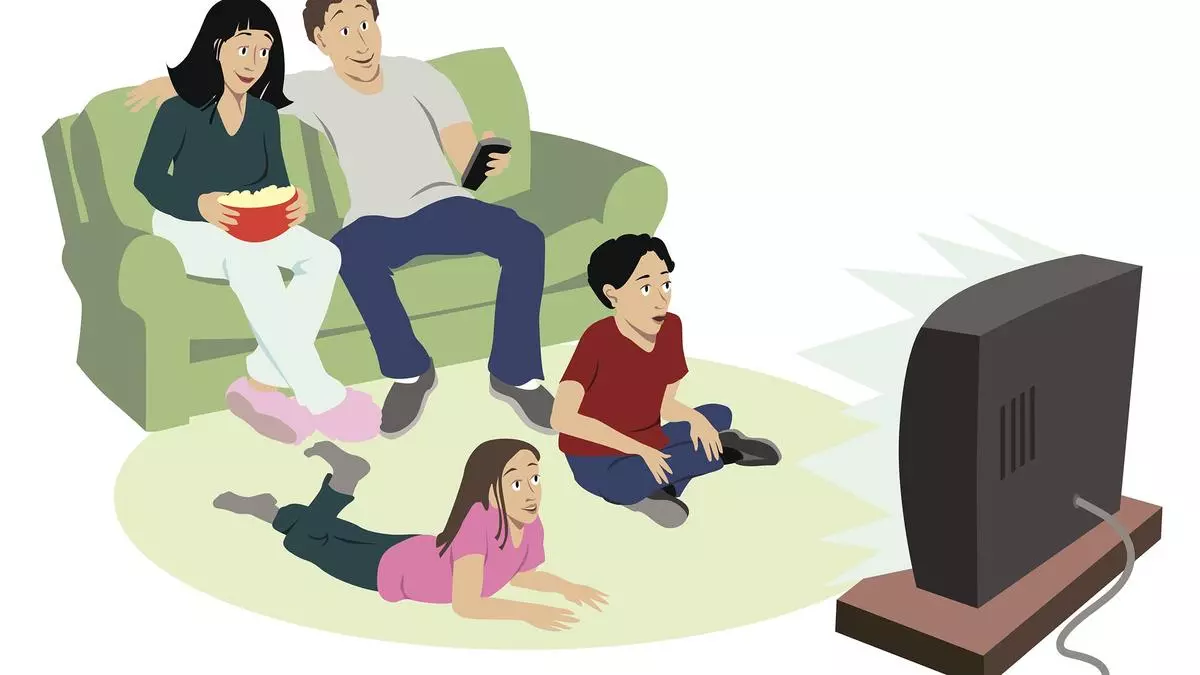If there’s one object that has revolutionised the Indian middle-class living room, it’s the television — also known as the “idiot box”. More than just an appliance, the TV became a window to the world for countless Indian households, providing entertainment, information and a unique shared experience.
Contrary to the belief that smartphones have taken over, television still holds a significant place in the family living room. It remains the go-to medium for shared experiences, whether it’s watching a cricket match, a family drama, or the evening news. Even in the age of personal screens, the television brings people together, offering a communal space for collective viewing and discussion.
Before the rise of cinema halls and multiplexes, television was the primary source of entertainment for entire neighbourhoods. Evening TV shows and weekend movies would draw families together, sometimes even neighbours, creating a communal viewing experience that transcended the walls of individual homes. Iconic shows like “Ramayan” and “Mahabharat” brought streets to a standstill as people gathered around TVs to watch the latest episode.
However, owning a television set in the past came with its own set of challenges. Adjusting the antenna to get a clear picture was a routine affair, often requiring a delicate balance between patience and ingenuity. It wasn’t uncommon to see someone perched precariously on a chair, twisting and turning the antenna while someone else shouted directions from the living room. And if all else failed, a good thump on the side of the TV set was the go-to solution to get it working again.
Television sets have come a long way since those early days. From bulky, boxy black-and-white sets to sleek, ultra-thin LED screens, the transformation has been remarkable. Today’s televisions offer high-definition picture quality, smart connectivity and a plethora of channels catering to every conceivable interest. Despite these advancements, the essence of television remains unchanged — it continues to be a central feature of family life, providing a shared space for relaxation, information and entertainment.
Not at all idiotic
One must not forget that this so-called ‘idiot box’ has proven to be anything but idiotic. The TV brings with it an incredible amount of power. Marshall McLuhan, a prominent Canadian scholar of mass media, famously said, “Television brought the brutality of war into the comfort of the living room. Vietnam was lost in the living rooms of America — not on the battlefields of Vietnam.” This quote underscores the profound impact television has had on society, shaping public opinion and bringing global events into the intimate spaces of our homes.
In the India context, the Asian Games of 1982 brought with it the colour television, which in turn brought the whole nation together in rooting for the country. Further, the assassination of Prime Minister Indira Gandhi and the subsequent coverage brought the nation together in a shared moment of grief, reflection and turmoil.
Yes, you could argue that the death of India’s first Prime Minister, Jawaharlal Nehru brought about a similar reaction in the masses of India. However, that announcement was made through the radio — TV’s elder cousin. Radio, even though still quite pervasive in rural India, will never be able to match the impact that vivid visual images do.
Now we live in an era where individual screens dominate, and yet television still stands as a testament to the power of collective experiences. So, the next time you find yourself gathered around the TV with your family, remember that you’re part of a long tradition — one that has seen countless moments of joy, sorrow and everything in between, all framed by the comforting glow of the television screen.
Television, the humble “idiot box,” remains a beloved and integral part of Indian middle-class life. As we continue to navigate an increasingly digital world, the television stands as a reminder of the joy and connection found in communal viewing.
(Hamsini Shivakumar is a Semiotician and founder of Leapfrog Strategy Consulting. Prabhjot Singh Gambhir is Manager: Creative, Cultural Insights & Semiotics at Leapfrog)

